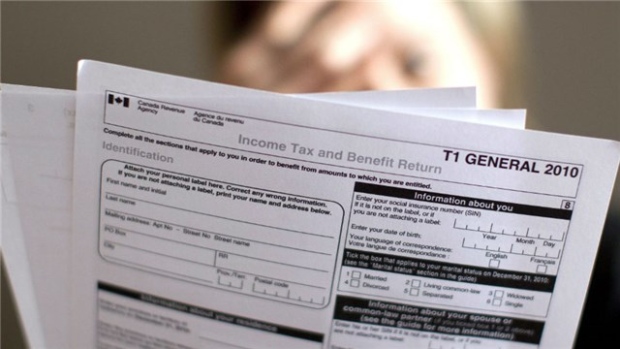Dec 30, 2016
Pattie Lovett-Reid: 5 tax resolutions for 2017

Every year, I try to sit down with tax expert Jamie Golombek, simply because if you follow his advice, you will have more money left in your pocket and less money paid to the government. This year was no exception.
It is so important to take advantage of the three Ds when it comes to tax planning – deduct, defer and divide income. Tax planning is a year-round challenge so what better time to lay out a roadmap to tackle your tax burden than the beginning of the year?
Here are Jamie Golombek’s top five tax resolutions to help you minimize your tax burden and maximize your financial position in 2017 and beyond:
1. Contribute $5,500 to your TFSA for 2017
Last year’s TFSA dollar limit was also $5,500 so if you didn’t maximize their 2016 contributions, you can still do so this year or in any future year. If you were 18 years old in 2009 – the total cumulative contribution amount in 2017 is now $52,000.
2. Contribute to your RRSP for the 2017 tax year
If you expect to be in a lower tax bracket when you retire than you are in this year, consider making an RRSP contribution. While much of the focus over the next 60 days will be on the 2016 contribution deadline of March 1, 2017, why not get a head start on your 2017 contribution. The RRSP limit for 2017 is the lesser of 18 per cent of 2016 earned income or $26,010.
3. Contribute at least $2,500 to each child’s RESP to receive a $500 CESG
If you have children, be sure to contribute at least $2,500 to each child’s registered education savings plan (RESP) this year to take advantage of the $500 Canada Education Savings Grant. You may also be able to catch up on missed CESGs from prior years.
- Pattie Lovett-Reid: The financial pitfalls of travelling without insurance
- Pattie Lovett-Reid’s top five personal finance tips
RELATED ITEMS
4. Avoid a huge tax refund next spring
Plan now to avoid a tax refund next spring. If your clients regularly get a large tax refund each spring, consider having them apply now for a reduction of tax at source using CRA Form T1213, which must be completed anew each calendar year. The increased cash flow can be redirected directly into your RRSP, TFSA or RESP.
5. Update your will and pledge to review it annually
Make sure you have updated wills to take into account any changes in your personal, familial or financial circumstances. You should pledge to make it a priority to review your will in 2017 and every year.
Bonus tip: How to save on income taxes in a post income-splitting world
While income splitting for families, known formally as the Family Tax Cut, was eliminated a couple of years ago, you may still be able to do some income splitting by taking advantage of the historically low prescribed rate. If your spouse, partner or kids are in a lower tax bracket, consider a prescribed rate loan strategy whereby the higher-income spouse or partner loans funds to the lower-income spouse or partner to invest at the record low prescribed rate, which is set at one per cent until at least March 31, 2017. Once the loan is extended, however, the rate is locked in for its duration.




